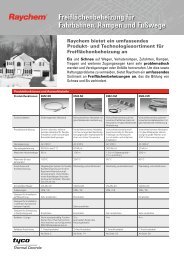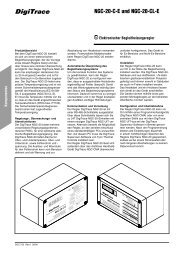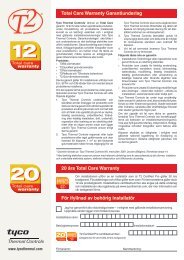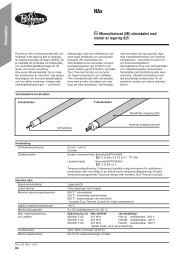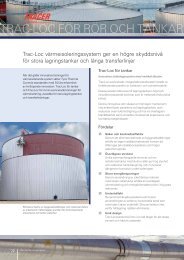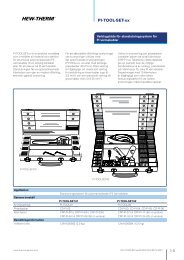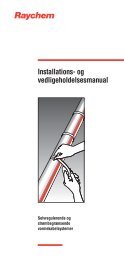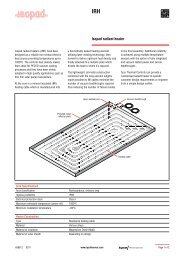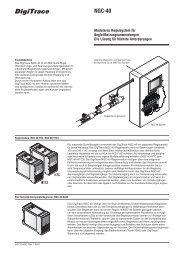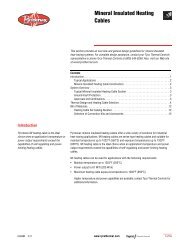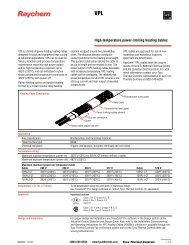Installation, Maintenance and Operation Manual - Tyco Thermal ...
Installation, Maintenance and Operation Manual - Tyco Thermal ...
Installation, Maintenance and Operation Manual - Tyco Thermal ...
Create successful ePaper yourself
Turn your PDF publications into a flip-book with our unique Google optimized e-Paper software.
9<br />
d excessive pulling force<br />
d kinking <strong>and</strong> crushing<br />
d walking on it, or running over it with equipment.<br />
D Keep heating cable strung loosely but close to the pipe<br />
being traced, to avoid interference with supports <strong>and</strong> other<br />
equipment.<br />
D Add additional heating cable to trace the fittings,<br />
supports <strong>and</strong> other accessories as required by the design<br />
specification.<br />
D Leave the appropriate amount of heating cable at all power<br />
connection, splice <strong>and</strong> tee locations. (Refer to component<br />
installation instructions)<br />
D Pay out designed length <strong>and</strong> mark (i.e. with fixing tape) on<br />
cable while remainder of cable still on reel (XPI: use printed<br />
metermarks for orientation).<br />
3.3 Heating cable attachment<br />
d Do not use metal b<strong>and</strong>ings, tie wire, vinyl electrical tape<br />
or duct tape, as heating cable damage may result. Fix<br />
in place with a minimum of two wraps of the appropriate<br />
self-adhesive glass cloth tape, metal mesh or fixing strip at<br />
300 mm intervals <strong>and</strong> additionally where necessary. Other<br />
attachments (like aluminium tape) may be specified in the<br />
design documentation.<br />
D Cable must be installed <strong>and</strong> fixed as such, that movement<br />
of cable during its heating up cycles is permitted, but not<br />
to allow the cable to move freely under its own weight.<br />
The heating cables may be installed in straight, multiple<br />
runs as required by the design specification<br />
D On horizontal pipes fix on lower quadrant as shown below<br />
<strong>and</strong> not on bottom of pipe.<br />
Figure 4: Cable orientation on pipe<br />
Pipe<br />
Sensor<br />
Pipe<br />
Sensor<br />
Heating cable Heating cable<br />
Read the design documents, in particular concerning the<br />
need for cable allowances <strong>and</strong> regard the location of junction<br />
boxes/ controllers before permanently attaching the<br />
cable to the pipe.<br />
D <strong>Installation</strong> on tanks might require additional fixation devices<br />
as prepunched steel strips as shown on the next page:



